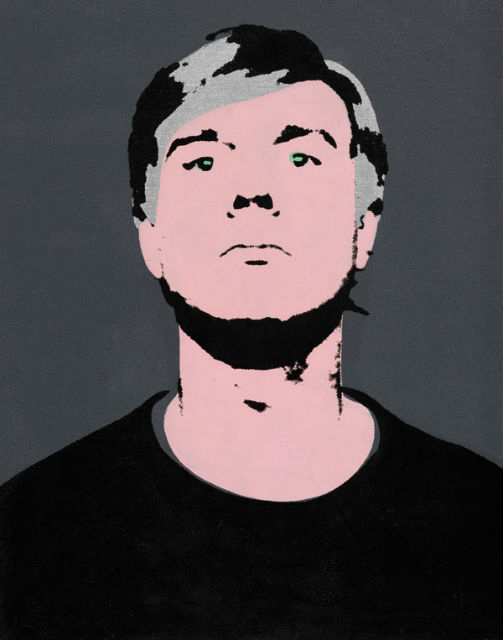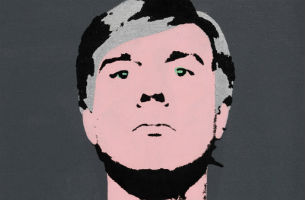
NEW YORK – “Andy Warhol—From A to B and Back Again,” the first Warhol retrospective organized in the U.S. since 1989 and the largest in terms of its scope of ideas and range of works, will be an occasion to experience and reconsider the work of one of the most inventive, influential and important American artists. With more than 350 works of art, many assembled together for the first time, this landmark exhibition, organized by the Whitney Museum of American Art, will unite all aspects, media and periods of Warhol’s 40-year career. The exhibition debuts at the Whitney on Nov. 12, and will run through March 31, 2019.
Following its premiere at the Whitney, the exhibition will travel to the San Francisco Museum of Modern Art and the Art Institute of Chicago.
While Warhol’s Pop images of the 1960s are recognizable worldwide, what remains far less known is the work he produced in the 1970s and ’80s. This exhibition positions Warhol’s career as a continuum, demonstrating that he didn’t slow down after surviving the assassination attempt that nearly took his life in 1968, but entered into a period of intense experimentation, continuing to use the techniques he’d developed early on and expanding upon his previous work. Taking the 1950s and his experience as a commercial illustrator as foundational, and including numerous masterpieces from the 1960s, “Andy Warhol—From A to B and Back Again” tracks and reappraises the later work of the 1970s and ’80s through to Warhol’s untimely death in 1987.
The exhibition is curated by Warhol authority Donna De Salvo, deputy director for International Initiatives and senior curator, with Christie Mitchell, curatorial assistant, and Mark Loiacono, curatorial research associate.
“Perhaps more than any artist before or since, Andy Warhol understood America’s defining twin desires for innovation and conformity, public visibility and absolute privacy,” noted De Salvo. “He transformed these contradictory impulses into a completely original art that, I believe, has profoundly influenced how we see and think about the world now. Warhol produced images that are now so familiar, it’s easy to forget just how unsettling and even shocking they were when they debuted. He pioneered the use of an industrial silkscreen process as a painterly brush to repeat images ‘identically,’ creating seemingly endless variations that call the very value of our cultural icons into question. His repetitions, distortions, camouflaging, incongruous color, and recycling of his own imagery anticipated the most profound effects and issues of our current digital age when we no longer know which images to trust. From the 1950s until his death, Warhol challenged our fundamental beliefs, particularly our faith in images, even while he sought to believe in those images himself. Looking in this exhibition at the full sweep of his career makes it clear that Warhol was not just a 20th- century titan but a seer of the 21st century as well.”
Occupying the entirety of the Whitney’s fifth-floor Neil Bluhm Family Galleries, the adjacent Kaufman Gallery, the John R. Eckel, Jr. Foundation Lobby Gallery, the Susan and John Hess Family Gallery and Theater, “Andy Warhol—From A to B and Back Again” will be the largest exhibition devoted to a single artist yet to be presented in the Whitney’s downtown location. Tickets will be available on the Whitney’s website beginning in August.
Through his carefully cultivated persona and willingness to experiment with nontraditional art-making techniques, Andy Warhol (1928–1987) understood the growing power of images in contemporary life and helped to expand the role of the artist in society, making him one of the most distinct and internationally recognized American artists of the 20th century. This exhibition sets out to prove that there remains far more to Warhol and his work than is commonly known. While the majority of exhibitions, books, articles and films devoted to Warhol’s art have focused on a single medium, subject, series or period, “Andy Warhol—From A to B and Back Again” will employ a chronological and thematic methodology that illuminates the breadth, depth and interconnectedness of the artist’s production: from his beginnings as a commercial illustrator in the 1950s, to his iconic Pop masterpieces of the early 1960s, to the experimental work in film and other mediums from the 1960s and ’70s, to his innovative use of readymade abstraction and the painterly sublime in the 1980s. The show’s title is taken from Warhol’s 1975 book, The Philosophy of “Andy Warhol (From A to B and Back Again),” an aphoristic memoir in which the artist gathered his thoughts on fame, love, beauty, class, money and other key themes.
Building on a wealth of new materials, research and scholarship that has emerged since the artist’s untimely death in 1987, as well as De Salvo’s own expertise and original research conducted by the Whitney’s curatorial team, the checklist of works has been carefully selected from among the thousands of paintings, drawings, prints, sculptures, films, videos and photographs that Warhol produced during his lifetime.



